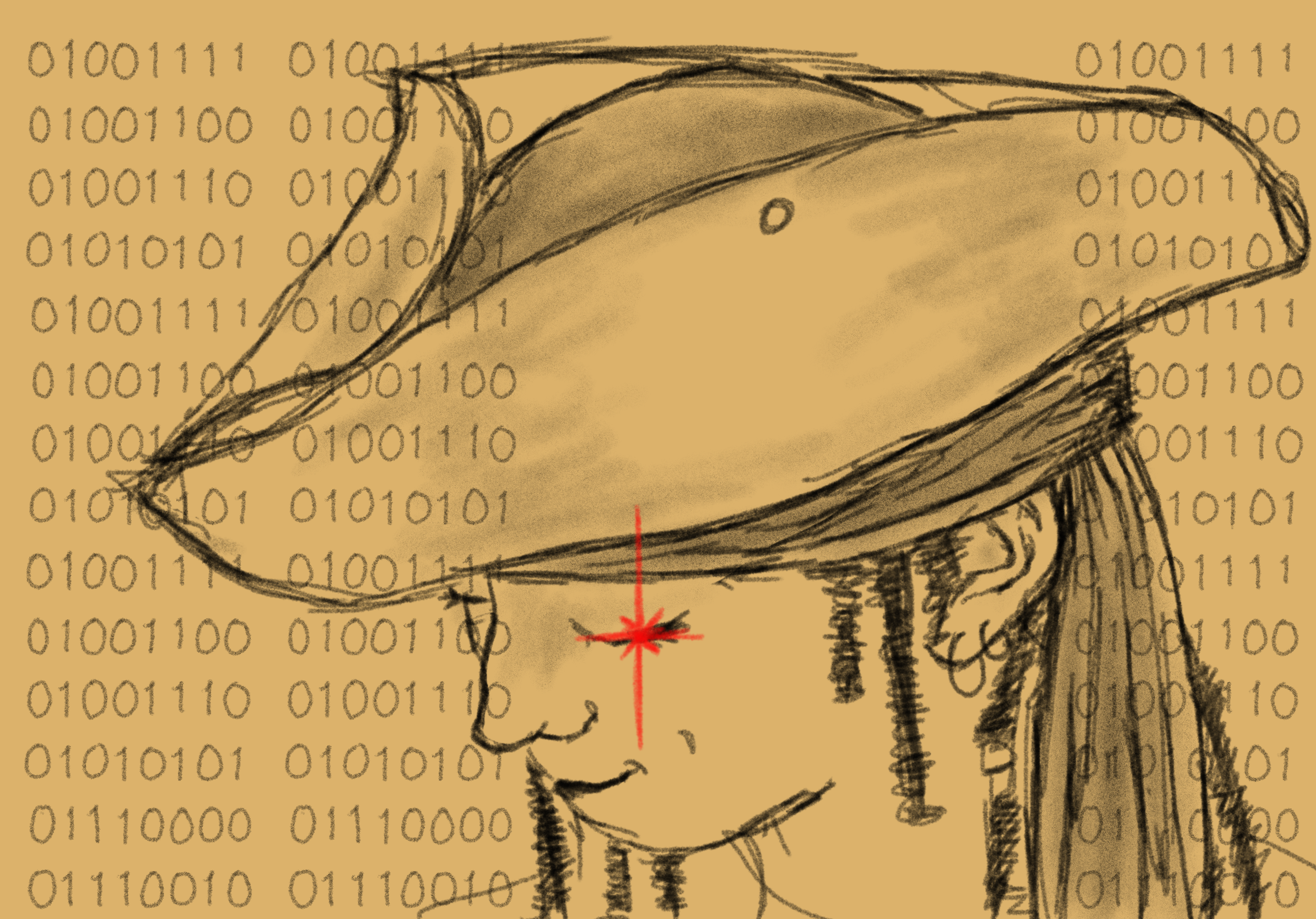In recent years, following the legalization of cannabis under the Cannabis Act and decriminalization of opioids, crack/powder cocaine, methamphetamine, and MDMA under the Controlled Drugs and Substances Act implemented in January 2023, many discussions surrounding substance use have been underway. These conversations are happening nationwide and are close to home for many UBC Okanagan students. But why are these conversations only happening now?
To discuss the resources provided on campus and in the downtown community of Kelowna, I met with Lauren Airth, Campus Health Specialist and Harm Reduction Team (HaRT) co-founder and coordinator at the UBCO campus.
Meeting at Picnic in the University Center (UNC) building, we began our interview by exploring the various services offered on campus to students in this space, along with other community-based initiatives to support the student body.
“There’s stuff for food security, sexual health, mental health, harm reduction, naloxone training in Picnic. We do naloxone training every Monday from 12:30–2:30 [p.m.] and every Thursday in Nechako Residence Wellness Hub between 6–8 [p.m],” Airth explained.
Moving upstairs to UNC 337, I witnessed firsthand the area where drug checking occurs every Thursday night between 6–8 p.m. This service is drop-in based and available downtown on Tuesday to Friday afternoons at the Living Positive Resource Centre and Wednesday evenings at Outreach Urban Health Center.

Sitting down with Airth and the work-study drug technicians, Elana and Maude, we discussed the importance of having facilities like HaRT on campus with the opportunities available through the university and its funding.
Airth began by explaining, “We are in a very unique position to be able to operate on campus like this. Other universities have been fighting for years to get their students these resources. It makes a difference to come and access this in a space where students are already comfortable.”
“We decided to develop the program through this university partnership because non-profits in the community or overdose prevention sites operate most other drug-checking programs,” she continued. “[HaRT] is a bit different because we know that students learn how to use these skills in classrooms, and it makes sense to set up a program where you can apply those skills outside of the classroom.”
“And when we look at the way the toxic drug crisis is impacting our communities, it just makes sense to me to be using resources that we have readily available; it helps offload some of the burdens from the community where there’s not a lot of funding, and we can use our resources to plug back in,” she added. “We operate out of two offices, so there are many diverse experiences between the two places.”
Continuing our discussion, we moved toward the mechanics of the drug testing that occurs in collaboration with UBCO students and faculty. Familiar to many students in science, technology, engineering, and math (STEM), a Fourier-transform infrared spectroscopy (FTIR) is the machine used when testing substances are brought to the clinic — putting academic-based knowledge front and center.

The process of testing each substance is relatively simple. Airth explained, “We put a sample the size of a grain of rice onto the crystal lens, and a laser will take 28 photos, pulling up a FTIR spectra. We can find anything in the sample in a five per cent or more concentration. Then, these IR spectrums are compared to different chemical libraries to analyze spectrums of known substances.”
“We can also check drugs after someone takes it; it doesn’t just have to be before they use it,” she said. “We’ve had folks worried there might have been something in their food or drink after an event, and it was a situation where they weren’t prepared.”
Pointing towards the FTIR, Airth continued, “We’ve put food on there. But pills, crystals, or powders are the things that work best. We don’t check plants like mushrooms or cannabis, but we can if they are in a different form, like a crystal or pill. In saying that, we’d still like to chat with people about their experiences with those drugs and what to be mindful of, and we can check those things if they're in the form of, for instance, shatter.”
When discussing the advertised anonymity of the program, I asked Airth how students are treated with discretion when they come to the clinics; some might be nervous, while others are newcomers. She responded:
“It requires trust for sure. We talk on the team about what that means to be anonymous and confidential. We don’t ask for their name or information when they come in. A person could come in and give us a fake name; they could not even be a student here; it’s just about the drug.”
“The nice thing about operating out of the clinic space is that everything that happens in the clinic space must also remain confidential,” she continued. “So, even outside of our service, if one of the counsellors sees someone walk in here, people aren't allowed to share that information.
People can even come to us and say, ‘Hey, I don’t know what this is. I found it on the ground’, and if it’s MDMA that they bought and they just want to make sure it's MDMA, it’s totally fine.”
To dig deeper into the foundations of the program beyond drug testing. I learned that there is a lot of peer-based education that not only provides lived experience, but also factually correct information. Information like this is essential, considering that for many new users, clear and correct sources can be challenging to find online.
After testing, HaRT can provide information and advice to promote harm reduction for students and community members.
When asked what this looks like, Airth responded, “We base the information that we give on what people tell us. Is it your first time? Okay. Then, you want to be mindful of things like X, Y, and Z regarding how this drug will affect you. Often, if it’s someone’s first time trying something, we recommend they have sober, trusted friends who can intervene as necessary. Also, it’s important to start with a low dose and go slow so they can figure out how that feels for them.
If someone were talking to us about alcohol, we’d tell them for every drink of alcohol you have, have a glass of water. Make sure you can get a taxi home, or if you're going to drive home, don't have any more than this much.
It’s very personalized advice that we give, but it's also evidence-based. Evidence-based information from the expertise of people with lived and living experiences. The information we give is based on whether it’s one of us who’s used that drug or other folks we work alongside who’ve used it. For example, we know what works well for people and what doesn’t. If you have an experience that didn't sit right with you, we can also check drugs afterwards.”
HaRT’s crucial role in the community is clear, but many wonder why it took so long to get these resources after British Columbia communities have fallen into a drug crisis. Speaking with Airth, the stigmatization of substance use and its subsequent meaning for public health paints a striking picture of a history of injustice.
“In the harm reduction world, we’re always compared to when it used to be the messaging for sexual health — don’t have sex,” she said. “How well did that work for everyone? Just because something’s legal doesn't mean that it's ethical. There’s no bad drug; there are just bad ways to use them, and the most dangerous substance that we can find is the substance that someone wasn’t expecting.”
Airth continued, “So, what are we upholding and why? I know it’s challenging in a bureaucratic environment for specific resources to be supported. Still, if you go back through the history of drug legalization, the whole history of illegal drugs is entirely based on racism — it's not based on public health.
We’ve had a big conversation with our Indigenous partners in the community about how important it is to have this program on campus. The work we’re doing . . . [we’re] referring to it as is an act of decolonization because we’re here on unceded territory, working out of an institution planted on unceded territory. We are doing something that is rooted in social justice and trying to address a crisis that is disproportionately impacting our Indigenous communities.”
By working against this stigmatization, HaRT is a resource beyond providing the Kelowna community with accessible services. It has showcased the resilience of classmates, community members, and friends in protecting each other where public health fails us.
HaRT can come to events and help keep members safe and having a good time. Last year, you might have spotted HaRT at events and festivals year-round, such as the upcoming Altitunes, Shambhala, or Bass Coast.

When asked about the different types of services available at each event, Airth clarified, “It depends on the event. So we’ll take drug checking wherever people want us to go. If that’s at the Frosh concerts or outside of The Well, we can do drug checking there.
Besides that, we provide a ton of Dance Safe cards. They’re downstairs at Picnic. They’re flashy with neat designs for every drug; all the info is on the back. We have take-home fentanyl test strips that we will show people how to use, and they can take those with them so they can test at home or give them to friends. Also, we provide naloxone training with tons of kits that anyone can come and grab.”
If you would like to collaborate with the team for any upcoming activities, they would be happy to help. However, do note that three weeks’ notice is needed for them to attend most events. So, I encourage anyone interested in the program to visit Picnic in the UNC or UNC 337 on Thursday evening to meet the amazing people behind the program. HaRT members can also be reached by email at Harm.Reduction@ubc.ca with any questions about the available services in the future.
If you enjoyed the graphic above, check out the Instagram page (unaffiliated with UBC) @kelowna_HaRT for t-shirts of this design and others to support the downtown Living Positive Resource Centre.



